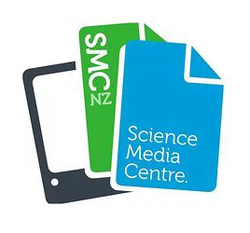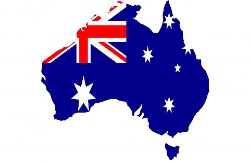Japan has recently deferred plans to release more than one million tonnes of treated nuclear wastewater from the damaged Fukushima Daiichi nuclear power plant into the Pacific Ocean until it is verifiably safe to do so.
In March 2011, a magnitude 9.0 earthquake and tsunami triggered a full meltdown of the power plant. Water has been used to keep three reactors under control and has been stored in tanks that now hold about 1.3 million tonnes of radioactive water, enough for about 500 Olympic-sized swimming pools – but space is running out.
The SMC asked experts to explain the science behind the treated wastewater.
Professor Jamie Quinton, Head of School of Natural Sciences, Massey University, comments:
“For several years now, Japan has been intending to release over 1.25 million tonnes of Fukushima wastewater into the sea as part of its plan to decommission the power station, when its storage capacity reaches its limit in 2023.
“Tokyo Electric Power (TEPCO) has built the infrastructure to extract tonnes of newly contaminated water each day – water that is needed to keep the core of each of its three damaged reactors cool. It includes a processing plant called ALPS (Advanced Liquid Processing System), which filters most of the radioactive elements present in the wastewater.
“Of the radioactive elements present in the treated wastewater, the primary component is tritium, which is an isotope of hydrogen. Wherever we find hydrogen, including in water, tritium is present in extremely low amounts. The treated Fukushima wastewater will have a significantly greater concentration of tritium, but by releasing into the ocean, the tritium concentration will quickly become extremely diluted to far less than one part per trillion. Over a 30 year period, 81.5% of the tritium radioactivity will be lost.
“Controversy with environmental groups arose because in April and May 2011, over 300,000 tonnes of untreated water was dumped into the ocean to free up water tanks, and these were 100 times over the legal limit for radioactivity release. While this led to the creation of the ALPS and dramatically improved the elemental profile of the wastewater, this initial dumping started the mistrust.
“In this original unprocessed wastewater, the radioactive isotopes of concern were iodine-131 and caesium-137, both of which are used in nuclear medicine radiotherapy applications which means that they have sufficient energy to cause cell death and mutation. In other words, they are capable of producing cancers.
“There were several other radioactive products in the unprocessed water that are hazardous to living species and ecosystems. As organisms consume other organisms, more of these radioactive products accumulate in their bodies, which can in turn, end up in humans. So these radioactive elements must be kept out of natural ecosystems as much as possible, especially the ocean.
“TEPCO claimed for years that the ALPS removed all radioactive materials except for tritium, but in 2018 they admitted that it isn’t perfect and doesn’t completely remove all of these heavy radioactive elements. This has led to further mistrust and people quite logically come to the conclusion that no release means no increase in radioactivity in the ecosystem. However, it’s worth noting that the storage tanks also pose a risk if they release the water in an uncontrolled manner for any reason (including natural disaster, etc).
“TEPCO and the Japanese government have sought endorsements from regulatory bodies and have received them from the International Atomic Energy Agency (IAEA), which have strict guidelines and international standards on the acceptable practices for radiation protection, and oversee the release of water used in fission reactors around the world.
“The IAEA have given their endorsement to the Japanese government and they are planning to go ahead after assessing the risks and dangers of releasing the wastewater from a radiological perspective. Currently, an independent panel of global experts on nuclear issues are supporting Pacific Islands Forum nations in their consultations with Japan over its intentions to discharge treated nuclear wastewater into the Pacific Ocean.
“I have no doubt that the panel and the IAEA will establish monitoring of radiation levels prior to, during and subsequent to any release of wastewater into the ocean.
“Hopefully the Japanese government and TEPCO have explored the possibility of seeking a use for the tritiated water through the global nuclear fusion community, as tritium is a key fuel of interest for fusion reactor research.
“If the release of wastewater into the ocean is to proceed, getting the process correct and within regulations is of particular importance to Japan’s aquaculture-based industries. It is in Japan’s economic interest to ensure that the waterways remain below internationally acceptable levels for background radiation so that food safety is assured, and their capacity for international trade remains unaffected.”
No conflict of interest declared.
Dr David Krofcheck, Senior Lecturer in Physics, University of Auckland, comments:
What are the potential dangers of releasing nuclear wastewater into the ocean? Is there a way to do it with full confidence that it is safe?
“The danger of indiscriminately releasing nuclear fission products into the ocean is that the products can find their way into the food chain. Once in the food chain the long-lived nuclear fission heavy nuclei like cesium-137, strontium-90, and iodine-131 tend to concentrate in human muscle, bones, and thyroid, respectively. Cancers can be the result. This is why the Japanese must remove as much of that these radioactive nuclei from the Fukushima water before release. The cesium-137 and strontium-90 nuclei still exist on the ocean floor due to atmospheric nuclear weapons tests. A good guide for having confidence in the safe release of radiation is to reduce radiation exposure to make it as low as reasonably achievable (ALARA). Filtering out the fission nuclei from the stored wastewater is the best that can be done.”
What do we know now about the treatment process, and what additional evidence is needed to know it is safe to release?
“Cooling seawater and later groundwater started flowing through the destroyed Fukushima nuclear reactor in 2011. Until 2013 this water was dumped directly into the Pacific Ocean. The water initially carried dozens of radioactive products of nuclear fission. The first two years were the most dangerous time because long-lived heavy nuclei like cesium-137, strontium-90, and iodine-131 ended up in the atmosphere and ocean.
“The solution to reducing the number of nuclear fission nuclei released was to develop and employ in 2013 an advanced liquid processing system (ALPS). A series of filters was designed to remove all fission nuclei except for tritium and carbon-14. The ALPS partially worked. The Tokyo Electric Power company TEPCO and the International Atomic Energy Agency IAEA agree that about 70% of the stored Fukushima water may still carry some of the original nuclear fission nuclei. This water should be run through more cycles of the ALPS before dilution and release into the ocean.
“The other 30% of the treated water can be diluted with seawater by factors of several hundred to one thousand and then released into the ocean. Any remaining tritium and carbon-14 from the Fukushima reactor may find its way into the food chain, but these nuclei stay in the human body for roughly 10 days before half of their number is excreted. The 10 days is known as the biological half-life.
“Tritium and carbon-14 are naturally produced by high energy protons hitting nitrogen and oxygen nuclei in our atmosphere and landing in the world’s oceans, so they naturally exist in our bodies. It is important not to conflate the radiation from nuclear fission nuclei like cesium-137, strontium-90, and iodine-131, with the naturally occurring tritium and carbon-14. The latter two nuclei will always be in the environment.”
No conflict of interest.




 350.org: Australia Announces Election Dates, Pacific Islanders Rally To Vote For Climate
350.org: Australia Announces Election Dates, Pacific Islanders Rally To Vote For Climate UNICEF Aotearoa NZ: Global Aid Funding Cuts - 14 Million Children At Increased Risk Of Severe Malnutrition And Death
UNICEF Aotearoa NZ: Global Aid Funding Cuts - 14 Million Children At Increased Risk Of Severe Malnutrition And Death Oxfam Aotearoa: Humanitarian Operations In Gaza Severely Hampered; Famine Risks Increasing
Oxfam Aotearoa: Humanitarian Operations In Gaza Severely Hampered; Famine Risks Increasing UN News: Migrant Deaths In Asia Hit Record High In 2024, UN Data Reveals
UN News: Migrant Deaths In Asia Hit Record High In 2024, UN Data Reveals Sonali Kolhatkar, IMI: First, They Came For The Venezuelans
Sonali Kolhatkar, IMI: First, They Came For The Venezuelans New Zealand Defence Force: New Zealand-led Task Force Continues To Disrupt Illegal Narcotics Smugglers In The Middle East
New Zealand Defence Force: New Zealand-led Task Force Continues To Disrupt Illegal Narcotics Smugglers In The Middle East